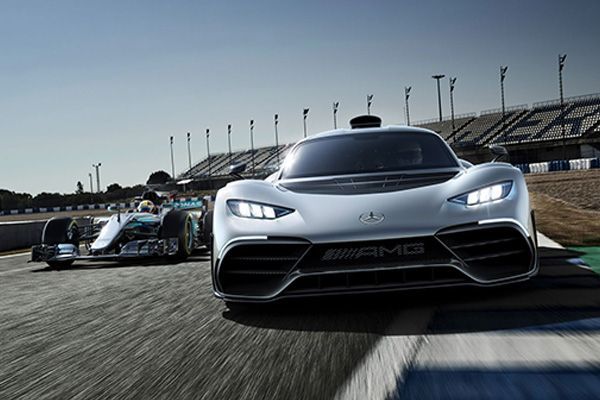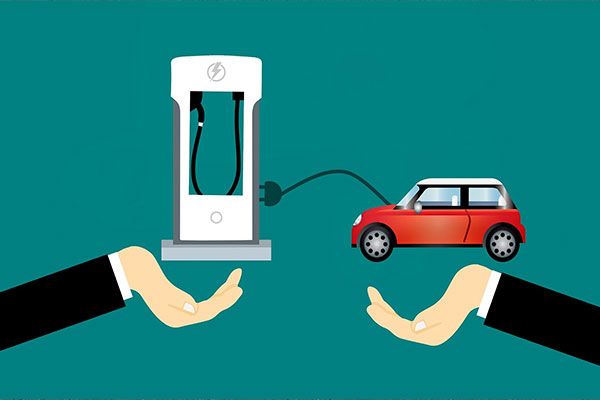The motorist’s symbols of technical purity, the great constructors of red-hot V12s adored the world over, are ready to astonish their old lovers: on the market, on the road and on the track, new supercars are coming that are as iconic as they are exciting, but they run on batteries and electric motors. Zero emissions in the city, a lap record on the track and a pit-stop at the charging column.

In the past few months, even if only a few remember it and, unfortunately, fewer still played an active part in the debate, the foundations for the future Euro7 emissions standards were issued. These standards will apply to vehicles on the road throughout Europe in the second half of the next decade. The precise definition of these standards is still being finalised, but some indications have been issued, by large and small bodies involved, and by businesses in the sector. The average motorist isn’t thinking about Euro7 standards, they’re not relevant yet. And anyone who already has an electric car doesn’t care because they’re already benefitting from zero emissions. But regardless of the final definition, which could kill off powerful petrol or diesel engines in cars and SUVs post-2030, one thing is certain: even the most stupendous, quick and iconic sports cars that are currently devoted to powerful engines, will become largely electric. It won’t be long before the new emissions standards enter into force.
It’s a simple question, one that derives from the good performance delivered by many hybrid racing engines, like those in F1, and from the emissions standards that will be imposed in a few years’ time and will need to be managed in advance. The 2030 targets will contain stringent limits which means that the Top10 best-selling cars in Italy will, probably, almost all be electric. And in the meantime? Diesel engines are no good in the city, where almost all new small cars are gradually becoming electric-only. The only people who still have doubts are those who love the good-looking cars from the last century: racing cars or their derivatives. How will the new hypercars be produced? How will makes like Ferrari and Lamborghini build the sporting icons we dream of? These aren’t cars for everyone, but they are cars that everyone dreams of. They take their reference and inspiration from technological performance. Let’s not forget the Germans. We mean Porsche, rather than Mercedes, obviously. Not even the Americans, with their newly elected President Biden, who is really pushing the electric car, could have anticipated the theoretical top speeds of the battery-powered Chevrolet Corvettes of the future, which will be ready to make their debut sooner than everyone thought.

Plug-in Supercars and Hypercars
Here, we’ve got a message to soothe the purists who, until they start driving all these new plug-in dream cars, may be “non-believers”. At Maranello, Ferrari has already released its new SF90 Stradale, which left early testers with their mouths open. It’s the car that young and old petrolheads alike will imagine as being the “absolute top” today. True, it’s powered by a V8 biturbo, but it’s also perfectly capable of driving with zero emissions, thanks to its plug-in system. The first Ferrari produced in (relatively small) volumes with a rechargeable battery. The electric part isn’t just for getting around the city, it also improves performance and, thanks to the motors being managed individually, it revolutionises driving to an extent that was once unthinkable. This would be impossible, without having each wheel powered by a dedicated electric motor. Although, sadly, we Italians have to admit that we weren’t the first to achieve this. It’s true that we’ll be keen to pat ourselves on the back for the vibrant plug-in sports car that is the new Lamborghini PHEV (pure V12 aspirated engine for the rear wheels, electric motor for the front wheels and to provide boost). However, in Japan, the Honda NSX has for some time featured a battery electric motor that perfectly integrates dynamic driving and ecological respectability with the concept of a supercar. Even Mercedes, the successors to Daimler, the inventors of the car, who have just released the first plug-in version of their top-of-the-range saloon (S-Class Plug-in Hybrid), also have a flagship supercar: the multi-million Euro AMG One which uses four electric motors and has two flaps on the sides, one of which is used for recharging at the column and to guarantee F1 performance on the road.

New friendly columns
Emilia Romagna was once known as the Kingdom of the Big Engines. Even without turbos, they were pure and exciting for those who really loved them. How do we save them, while observing the really strict emissions standards? Certainly not by downsizing them. That would be anathema to many because, for aspirated engines, it would mean removing cylinders and reducing torque at low revs, filling them with turbines or compressors that increase costs and maintenance for users. Better to integrate more refined electric propulsion. Of course, we couldn’t say that a Fiat 500 3+1 and a Renault Twingo Electric, rather than a VW ID.3, now have engines that are more similar to Ferraris than they were in the 80s, but… The electric driving phases of plug-in supercars will be much less different. On the contrary, if you’re driving on the track, the all-wheel drive with the front wheels driven by electric motors will make the new plug-in supercars more successful. For those of us lucky enough to enjoy them, they’ll be easier and safer to drive, and for those of us at the roadside or trackside, they’ll meet emissions and immissions standards.

The rear of these cars will still be “pure”, where only constructors like Ferrari, Lamborghini and Porsche will keep their big engines. We’re not kidding. Anyone who thinks that there’ll be fewer cylinders and less horsepower, will need to think again. First of all, Stuttgart has already said that about its legendary six-cylinder. But isn’t that absurd compared with the one of the last decade? No, in part due to the rules imposed, the progress made by electric cars will support the tradition, rather than render it extinct. Thanks to batteries and electric motors (supercars will have at least two, the SF90 already uses three), not only will Porsche’s flat-six not die out, it’ll just control the rear, but, according to recent news, the king of petrol motors, the V12, will also remain, only it’ll be electrified. We’re not talking about cars that will take over the whole market and affect the whole industry, but legends and influential symbols that, a few years ago, nobody would have imagined would become electric.
Ready for the leap?
Among the suppliers that the Prancing Horses (yes, plural – Ed.) and the Raging Bull thank at the end of the year, there will also be producers of cells for battery packs and elements for electric motors, convertors and chargers. The plug, used to connect to quick chargers like those that Be Charge is installing throughout Italy, is the new friend of those “lucky drivers” with Euro7 supercars and hypercars. You can see just by opening the fuel flap that, despite being niche models, these cars are keeping the myth alive, and trying new solutions that are useful in the long term for everyone. No-one’s going to be racing around the city anymore, now that electric driving systems have speed limiters, as found in everyday electric cars, but speed freaks could get closer to the idea of an electric car. Just wait a few years and then… slowly, the systems will evolve, making the leap from a few tens of Kms driving with zero emissions to more than a hundred. At that point, friendship may well become rivalry between the two forms of propulsion and marketers will wonder whether, after a few years of use, their rich clients will think, “Should I get an electric supercar instead of one with the old-style big engine?”. We can give a definite yes, 100% electric supercars will have their doors wide open and, contrary to today where only Porsche has the Taycan well positioned on the market, even in Emilia there will probably be electric supercars leaving the factories that will have them licking their lips.
In Collaboration with:









